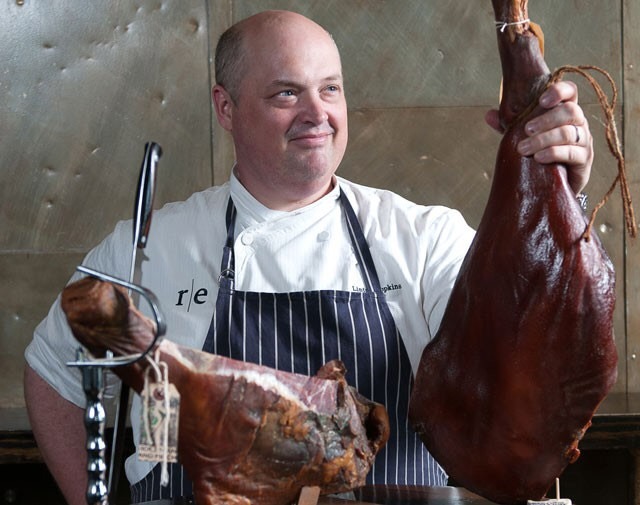Chef Linton Hopkins's Five Commandments Of American Ham
If there's one topic that really gets Hopkins giddy, however, it's the art of curing, slicing, cooking and glazing American ham. The chef views ham as a metaphor for the way all quality food should be treated in the U.S. — with the utmost care, from its sourcing to its preservation to its preparation to its service. We are talking, after all, about the founder of the Fellowship of Country Ham Slicers, a group of enthusiastic chefs and purveyors from all around the American South, dedicated "to celebrat[ing] the craft of slicing country ham by hand and serving it in its unadorned uncooked glory." Downright giddy, we tell you.
Hopkins was more than happy to ramble about the established history, storied traditions and little-known nuances of American ham. And we were more than happy to glean these five informative bits of knowledge along the way.
Linton Hopkins' Five Commandments Of American Ham


